Operating a dump trailer can significantly streamline your hauling tasks, whether in construction, landscaping, or agriculture. By understanding the various components and best practices associated with dump trailers, we can ensure a successful and safe experience. This guide will delve into the intricacies of how to operate a dump trailer, addressing key aspects like safety protocols, operational mechanics, and maintenance.
Table of Contents
- Understanding Dump Trailers
- 1.1 Types of Dump Trailers
- 1.2 Key Components
- Pre-Operation Safety Checks
- 2.1 Inspecting the Trailer
- 2.2 Safety Gear
- Connecting the Dump Trailer
- 3.1 Hitching Up
- 3.2 Electrical Connections
- Loading the Dump Trailer
- 4.1 Weight Distribution
- 4.2 Loading Techniques
- Operating the Dump Trailer
- 5.1 Raising and Lowering the Dump Bed
- 5.2 Towing Considerations
- Unloading the Dump Trailer
- 6.1 Choosing a Suitable Site
- 6.2 Unloading Techniques
- Post-Operation Maintenance
- 7.1 Cleaning the Trailer
- 7.2 Regular Maintenance Checks
- Common Issues and Troubleshooting
- Conclusion
1. Understanding Dump Trailers
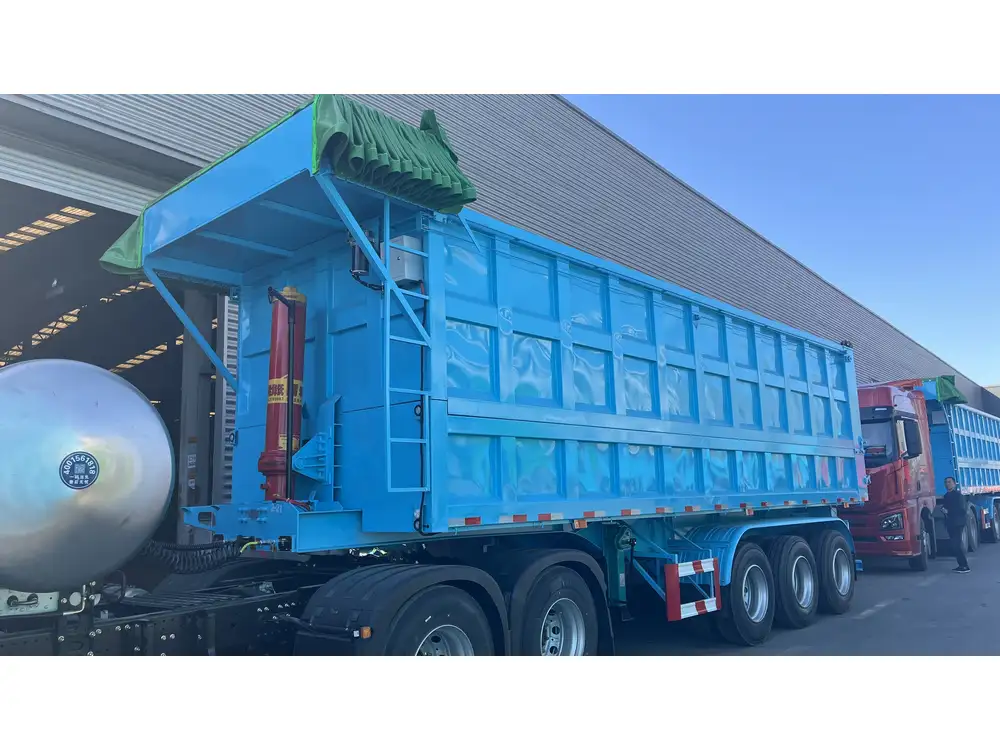
1.1 Types of Dump Trailers
Before diving into operation, it’s essential to grasp the different types of dump trailers available:
| Type | Description |
|---|---|
| Gravity Dump | Utilizes gravity to unload materials. Simple and effective for loose materials. |
| Telescopic Dump | Features a telescoping cylinder for higher dumping capabilities, ideal for larger loads. |
| End Dump | Material is unloaded at the back; great for construction sites. |
| Side Dump | Allows for unloading to the side; efficient for specific terrain and tight spaces. |
1.2 Key Components
A proper understanding of the dump trailer’s crucial components can inform better operational practices:
- Towing Hitch: Connects the trailer to the towing vehicle.
- Hydraulic System: Powers the lifting mechanism of the trailer bed.
- Dump Bed: The storage area where materials are loaded.
- Axles and Tires: Support the trailer’s load and ensure mobility.
2. Pre-Operation Safety Checks

2.1 Inspecting the Trailer
Before operating any dump trailer, conducting a thorough inspection is vital. Key areas to focus on include:
- Tires: Check for proper inflation and tread wear.
- Brakes: Ensure they engage smoothly without excessive wear.
- Lights: Verify operational brake lights and turn signals.
- Hydraulic System: Inspect hoses for leaks and ensure fluid is at appropriate levels.
2.2 Safety Gear
Wearing appropriate safety gear is important:
- Hard Hat: Protects against falling debris.
- Gloves: Safeguards hands when handling materials.
- Safety Boots: Supports and protects feet from heavy materials.
3. Connecting the Dump Trailer
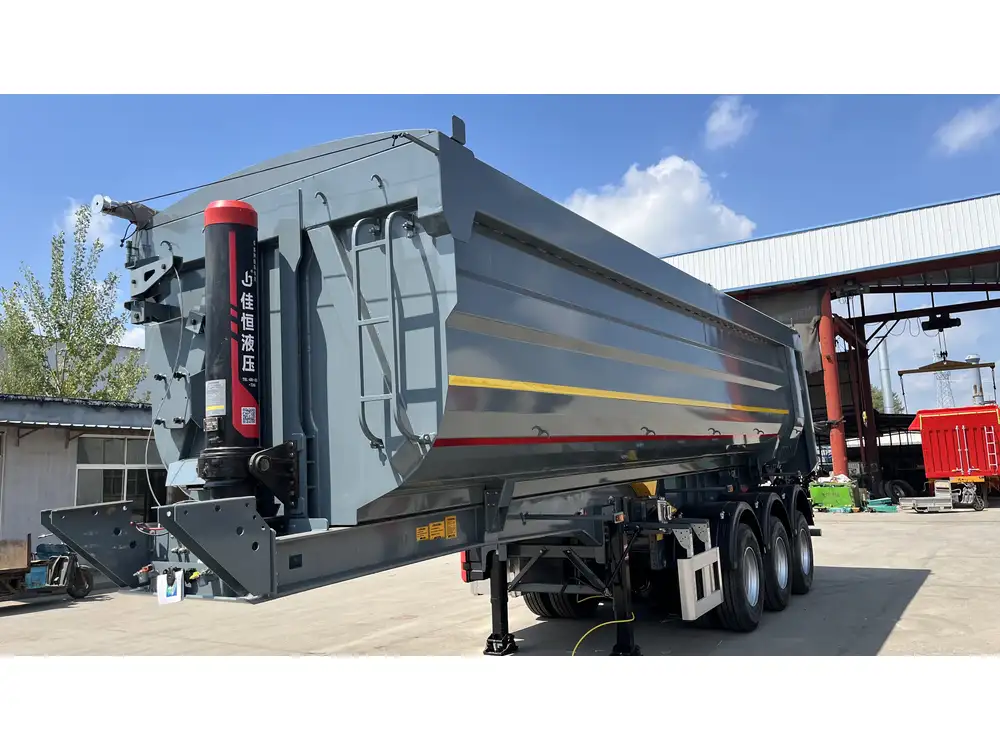
3.1 Hitching Up
Correctly connecting the dump trailer is crucial for safe towing. Follow these steps:
- Align the Hitch: Position the truck and trailer so they are aligned.
- Engage the Hitch: Lower the hitch onto the coupler and secure it. Ensure the safety latch engages.
- Attach Safety Chains: Cross the chains underneath the hitch to prevent detachment.
3.2 Electrical Connections
For the trailer’s lights and brakes to function properly, engage the electrical connectors:
- Connect the trailer’s wiring harness to the towing vehicle.
- Check the connection by testing the lights and brakes.
4. Loading the Dump Trailer
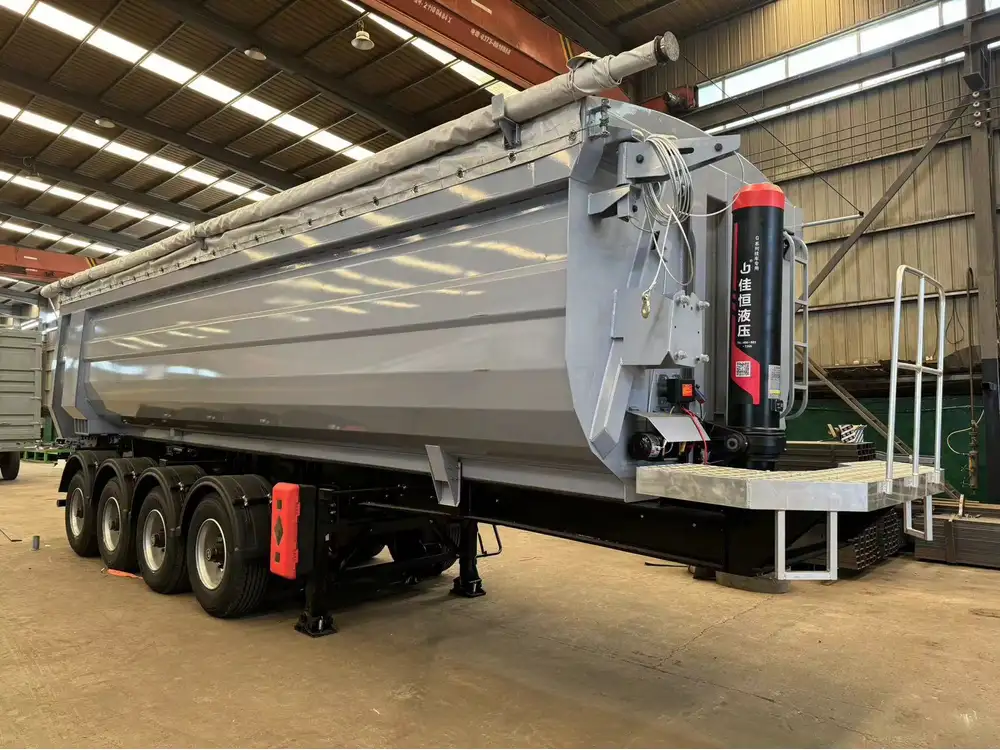
4.1 Weight Distribution
Proper weight distribution improves stability while towing. Load materials evenly across the trailer and keep them low to the ground.
| Loading Strategy | Benefits |
|---|---|
| Heap Loading | Good for lightweight and loose materials. |
| Stacking | Best for heavier, more substantial items. |
| Even Distribution | Enhances stability during transport. |
4.2 Loading Techniques
Utilize appropriate loading techniques based on the material type:
- For Loose Materials: Use a loader or skid steer to fill the trailer.
- For Heavy Items: Employ a forklift to place items carefully, ensuring they are stable.
5. Operating the Dump Trailer

5.1 Raising and Lowering the Dump Bed
Understanding the hydraulic function is essential when operating:
- To Raise: Engage the hydraulic lever or button to lift the dump bed. Monitor the load to ensure it stabilizes.
- To Lower: Gradually lower the dump bed, letting the hydraulic system control the descent. Ensure no one is in the vicinity of the trailer during this process.
5.2 Towing Considerations
When towing the trailer, adhere to the following guidelines:
- Speed Limit: Never exceed the speed limit for towing vehicles, typically lower for safety.
- Turning Radius: Allow for increased turning radius; wide turns help avoid collisions.
- Braking Distance: Increase following distance; heavier loads require more time to stop.
6. Unloading the Dump Trailer
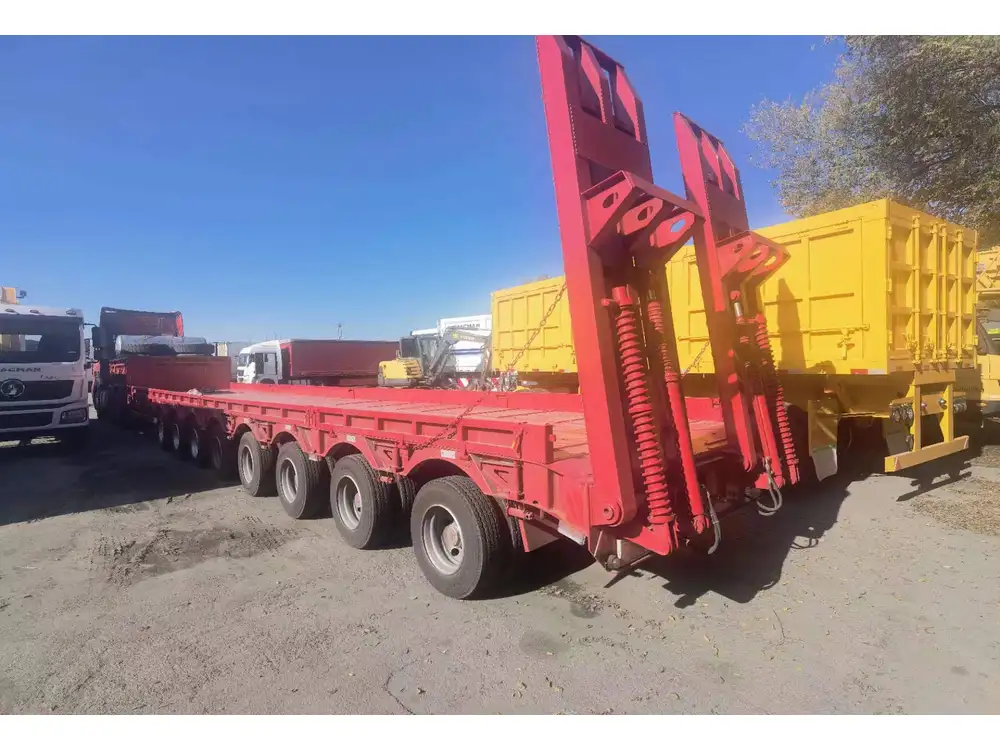
6.1 Choosing a Suitable Site
Selecting the correct unloading site is vital to avoid hazards:
- Ensure the ground is level to retain stability.
- Stay clear of overhead power lines and obstacles.
6.2 Unloading Techniques
There are various techniques for unloading:
- Gradual Release: Slowly raise the dump bed until the material starts to flow out.
- Pneumatic Discharge: For specific materials, utilize air pressure systems for efficient unloading.
7. Post-Operation Maintenance
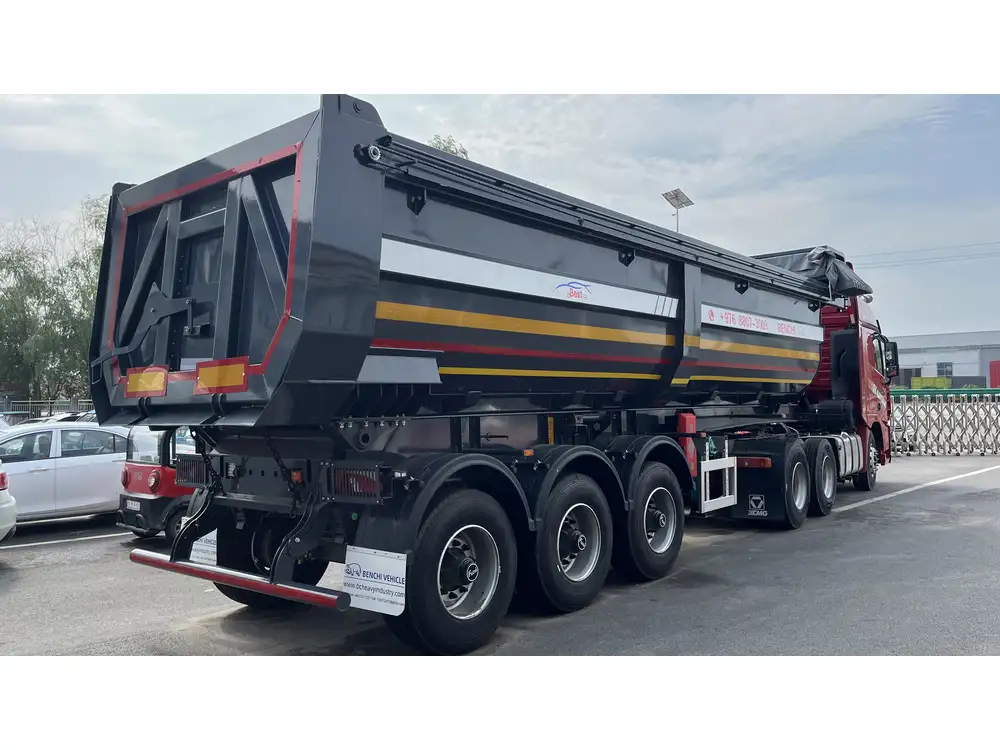
7.1 Cleaning the Trailer
After use, cleaning helps preserve the trailer’s integrity:
- Remove any leftover materials to prevent rust or corrosion.
- Wash the exterior with water and mild soap.
7.2 Regular Maintenance Checks
Routine maintenance ensures longevity and reliability:
| Maintenance Task | Frequency |
|---|---|
| Hydraulic Fluid Check | Monthly |
| Brake Inspection | Every 2 months |
| Tire Rotation | Every 6 months |
8. Common Issues and Troubleshooting
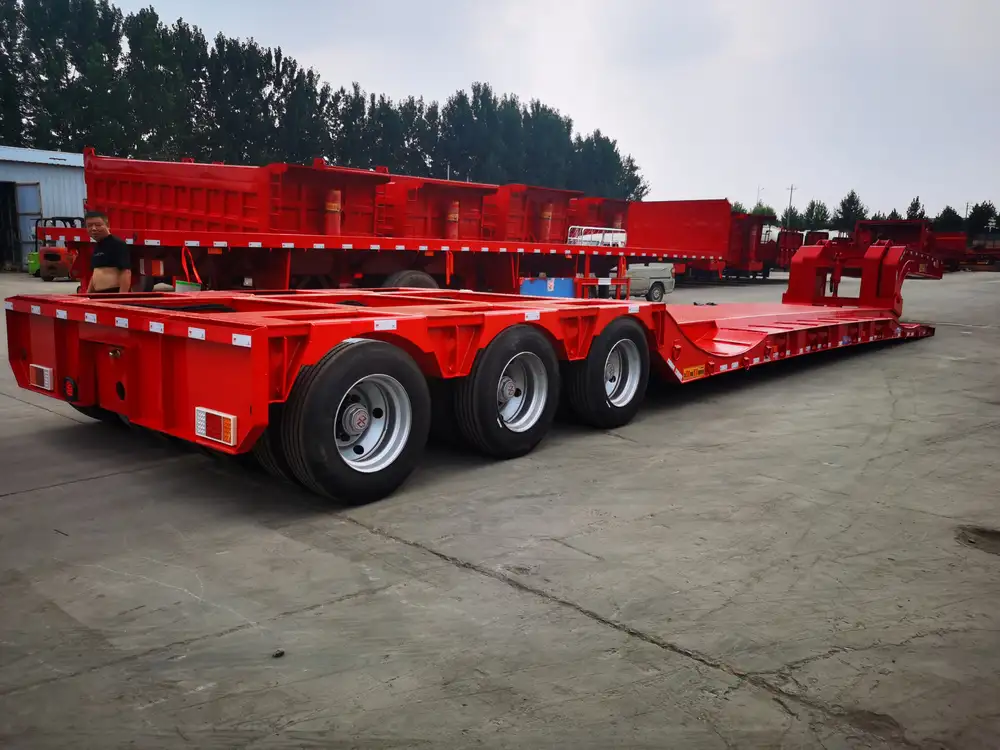
Hydraulic System Issues
- Problem: Hydraulic fluid leaks.
- Resolution: Inspect hoses and fittings for wear and replace as necessary.
Electrical Failure
- Problem: Lights not functioning.
- Resolution: Check connections and bulbs. Replace faulty components and fuses.
Towing Difficulties
- Problem: Trailer swaying during transport.
- Resolution: Adjust weight distribution and ensure the trailer is properly loaded.

Conclusion
Effectively operating a dump trailer requires understanding its components, adhering to safety measures, and following best practices for loading, unloading, and maintenance. By incorporating these guidelines, users can significantly enhance their efficiency and safety during hauling tasks, while prolonging the life of the trailer itself. Emphasizing safety and regular maintenance not only minimizes risks but also ensures that your dump trailer remains a reliable asset in your transport arsenal.



